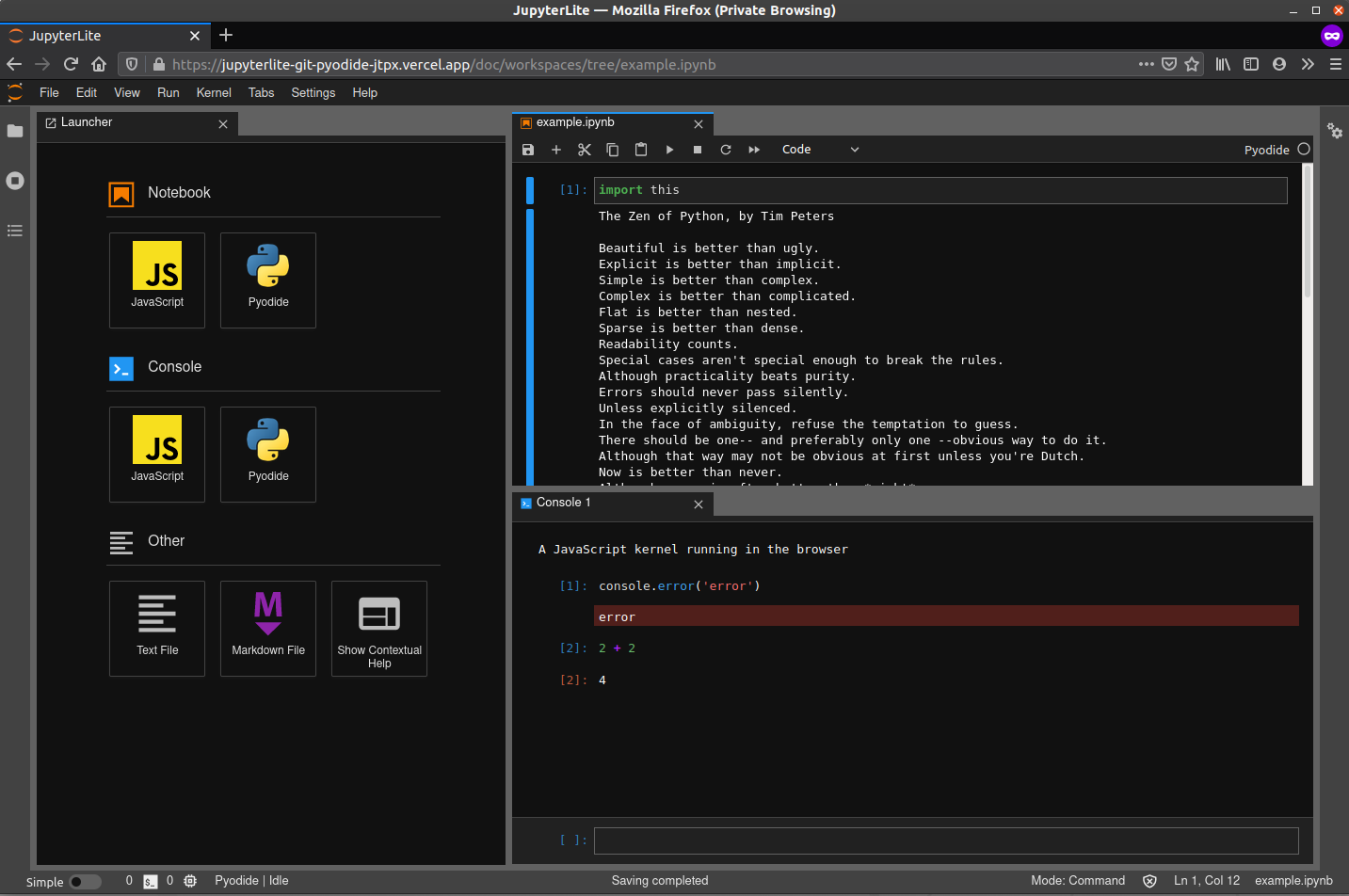Jupyter是一个交互式的 Python 开发环境,以 Ipython Kernel 为执行引擎,支持多种前端(Jupyter Notebook,Jupyter Lab,VS Code Jupyter 拓展),围绕.ipynb 格式的 notebook 文件,支持将代码、文档、图表、数学公式等内容整合在一起,方便用户进行交互式的开发。
Jupyter 的易用性很大程度上促进了 Python 在数据科学和机器学习领域的流行,Kaggle 和 Google Colab 等平台都提供了 Jupyter Notebook 的使用环境。
我本人是一个 Jupyter 的重度用户,经常需要在 Jupyter Notebook 中进行实验性代码编写、数据分析及可视化等工作。前几年我一般使用 Jupyter Lab 编写 Notebook,随着 VS Code Jupyter 拓展的发展和成熟,我现在更倾向于使用 VS Code 来编写 Notebook,可以充分利用到 VS Code 的诸多能力(例如 git 集成、Github Copilot 等)。
Jupyter Lab 和 VS Code 的 Jupyter 拓展本质上都是 Browser/Server 架构,需要在本地或远程后端运行 Ipython Kernel 服务。有没有办法在一台没有安装 Python 环境的电脑或者移动设备运行 Jupyter Notebook 呢?答案是肯定的。
Jupyterlite是一个纯浏览器环境的 Jupyter Lab 复刻,基于 Pyodide(一个 CPython 的 wasm 实现)。

有多种方法可以在浏览器中体验 Jupyterlite,最简单的是访问 Jupyterlite 提供的演示页面,也可以从 Jupyterlite 提供的模板创建一个新的 github 项目,并配置 github pages,部署一个自己的 Jupyterlite 环境。
感兴趣的同学可以访问我部署的 Jupyterlite 环境:
[https://duyixian1234.github.io/jupyterlite/lab/index.html]










